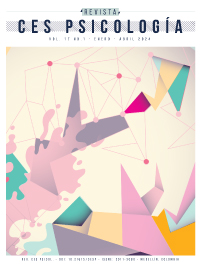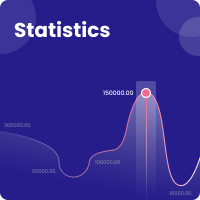Validity of the factor structure of EYUPIE-M: A measure of Emotional Intelligence in adolescents
DOI:
https://doi.org/10.21615/cesp.7051Keywords:
adolescents, emotional intelligence, assessment, psychometric properties, EYUPIE-MAbstract
Emotional intelligence (EI) is a capacity that contributes to adolescent adaptation. Since it is a complex construct, there are different models and evaluation criteria and instruments for its measurement. Given the need to have valid and reliable culturally situated measures, the main objective of this study was to confirm the factor structure and reliability of the Yucatán Scale of Perceived Use of Emotional Intelligence in Minors (EYUPIE-M) in Mexican adolescents, and test its concurrent validity through correlations with the Positive Health Scale. An instrumental study was carried out in which 1091 adolescent students from 9 to 19 years old participated (M = 14.07; SD = 1.77) from the State of Yucatan, Mexico, who answered the EYUPIE-M. Confirmatory factor analysis evidenced a four-factor model with good indicators of fit (χ2 =875.62, gl = 246, p < .001; CFI = .972; TLI = .968; GFI = .988; RMSEA = .049 [CI 90%: .046 - .053]; SRMR = .055). Reliability was examined from internal consistency indices alpha, omega, and glb, which ranged from .69 (α) to .94 (glb) for the factors and for the overall scale from .64 (ω) to .92 (glb). Convergent validity showed moderate correlations with the Positive Mental Health Scale. There were differences in EI levels according to sex and age. The EYUPIE-M presents adequate psychometric properties that support its potential usefulness for evaluating EI in Mexican adolescents.
Downloads
References
Álvarez, A.L. (2020). Correlatos entre rasgos de dureza emocional y uso de inteligencia emocional en adolescentes de zonas de riesgo psicosocial (Tesis de Licenciatura). FES, Zaragoza, UNAM, México. http://132.248.9.195/ptd2020/enero/0799775/Index.html
Balluerka, N., Gorostiaga, A., Alonso-Arbiol, I., & Aritzeta, A. (2016). Peer attachment and class emotional intelligence as predictors of adolescents’ psychological well-being: A multilevel approach. Journal of Adolescence, 53, 1-9. https://doi.org/10.1016/j.adolescence.2016.08.009
Barcelata, B., & Álvarez, A. (2021). Inteligencia emocional, dureza emocional e indicadores de conducta antisocial y prosocial en adolescentes de contextos adversos. En C., Armenta, A., Domínguez, & C., Cruz (Comp.) Aportaciones a la psicología social (pp. 215-236). Universidad Iberoamericana.
Bar-On, R. (2000). Emotional and social intelligence: Insights from the Emotional Quotient Inventory. In R. Bar-On, & J. D. A. Parker (Eds.), The handbook of emotional intelligence: Theory, development, assessment, and application at home, school, and in the workplace (pp. 363–388). Jossey-Bass.
Bar-On, R. (2004). The Bar-On Emotional Quotient Inventory (EQ-i): Rationale, description and summary of psychometric properties. In G. Geher (Ed.), Measuring emotional intelligence: Common ground and controversy (pp. 115–145). Nova Science Publishers.
Bar-On, R. (2010). Emotional intelligence: An integral part of positive psychology. South African Journal of Psychology, 40(1), 54-62. https://hdl.handle.net/10520/EJC98569
Bar-On, R., & Parker, J. D. A. (2000). BarOn emotional quotient inventory: Youth version. Multi-Health system, Incorporated.
Cobos-Sánchez, L., Flujas-Contreras, J. M., & Gómez-Becerra, I. (2017). Inteligencia emocional y su papel en el ajuste psicológico en la adolescencia. Anales de Psicología/Annals of Psychology, 33(1), 66-73. https://revistas.um.es/analesps/article/view/analesps.33.1.240181
Cohen, J. (1988). Statistical power analysis for the behavioral sciences (2ª Ed). Lawrence Erlbaum Associates.
Domínguez, A., Aguilera, S., Acosta, T. T., Navarro, G., & Ruiz, Z. (2012). La deseabilidad social revalorada: más que una distorsión, una necesidad de aprobación social. Acta de Investigación Psicológica, 2(3), 808-824.
Dominguez-Lara, S., & Merino-Soto, C. (2018). Evaluación de las malas especificaciones en modelos de ecuaciones estructurales. Revista Argentina de Ciencias del Comportamiento, 10(2), 19-24. http://www.scielo.org.ar/scielo.php?pid=S1852-42062018000200019&script=sci_abstract&tlng=en
Eignor, D. R. (2013). The standards for educational and psychological testing. In K. F. Geisinger, B. A. Bracken, J. F. Carlson, J.-I. C. Hansen, N. R. Kuncel, S. P. Reise, & M. C. Rodriguez (Eds.), APA handbook of testing and assessment in psychology, Vol. 1. Test theory and testing and assessment in industrial and organizational psychology (pp. 245–250). American Psychological Association. https://doi.org/10.1037/14047-013
Esnaola, I., Azpiazu, L., Antonio-Agirre, I., Sarasa, M., & Ballina, E. (2018). Evidencias de validez del Emotional Quotient Inventory: Youth Version (Short) en una muestra de adolescentes mexicanos. Estudios de Psicología, 39(1), 127-153. https://doi.org/10.1080/02109395.2017.1407905
Extremera, N., Durán, A., & Rey, L. (2007). Perceived emotional intelligence and dispositional optimism–pessimism: Analyzing their role in predicting psychological adjustment among adolescents. Personality and Individual Differences, 42, 1069-1079. https://doi.org/10.1016/j.paid.2006.09.014
Extremera, N., Ruiz-Aranda, D., Pineda-Galán, C., & Salguero, J. M. (2011). Emotional intelligence and its relation with hedonic and eudaimonic well-being: A prospective study. Personality and Individual Differences, 51(1), 11-16. https://doi.org/10.1016/j.paid.2011.02.029
Ferrando, P. J., Lorenzo-Seva, U., Hernández Dorado, A., & Muñiz Fernández, J. (2022). Decálogo para el análisis factorial de los ítems de un test. Psicothema. 34(1) 7-17. https://doi.org/10.7334/psicothema2021.456
Gardner, H. (2004). Inteligencias múltiples. La teoría en la práctica. Contextos educativos. Paidos. https://www.apega.org/wp-content/uploads/2015/01/inteligencias_multiples_teoria_practica.pdf
Gardner, K. J., Qualter, P., & Whiteley, H. (2011). Developmental correlates of emotional intelligence: Temperament, family environment and childhood trauma. Australian Journal of Psychology, 63(2), 75-82. https://doi.org/10.1111/j.1742-9536.2011.00010.x
Gómez-Romero, M.J., Limonero, J.T., Toro, J.T., Montes-Hidalgo, J.Y., & Tomássábado, J. (2018). Relación entre inteligencia emocional, afecto negativo y riesgo suicida en jóvenes universitarios. Ansiedad y Estrés, 24, 18-23. https://doi.org/10.1016/j.anyes.2017.10.007
González-Arratia-López-Fuentes, N. I., & Valdez Medina, J. L. (2016). Validez de la Escala de Salud Mental Positiva en niños mexicanos. Acta de Investigación Psicológica, 6(1), 2368-2383. https://doi.org/10.1016/s2007-4719(16)30056-4
Guerra-Bustamante, J., León-del-Barco, B., Yuste-Tosina, R., López-Ramos, V. M., & Mendo-Lázaro, S. (2019). Emotional intelligence and psychological well-being in adolescents. International Journal of Environmental Research snd Public Health, 16(10), 1720. https://doi.org/10.3390/ijerph16101720
Guijarro-Gallego, A., Martínez-Pérez, A., Fernández-Fernández, V., Alcántara-López, M., & Castro-Sáez, M. (2021). Life satisfaction in adolescents: relationship with parental style, peer attachment and emotional intelligence. Electronic Journal of Research in Educational Psychology, 19(1), 51-74. https://doi.org/10.25115/ejrep.v19i53.3425
JASP Team. (2022). JASP (Version 0.16.3). [Computer software].
Keefer, K. V., Holden, R. R., & Parker, J. D. (2013). Longitudinal assessment of trait emotional intelligence: Measurement invariance and construct continuity from late childhood to adolescence. Psychological Assessment, 25(4), 1255–1272. https://doi.org/10.1037/a0033903
Kline, R. B. (2011). Principles and practice of structural equation modeling. 3rd edition. The Guilford Press
Li, C. H. (2016). Confirmatory factor analysis with ordinal data: Comparing robust maximum likelihood and diagonally weighted least squares. Behavior Research Methods, 48(3), 936-949. https://link.springer.com/article/10.3758/s13428-015-0619-7
Lluch, M. T. (1999). Construcción de una escala para medir la salud mental positiva. (Tesis doctoral). Facultad de Psicología. Universidad de Barcelona, España.
MacCann, C., Joseph, D. L., Newman, D. A., & Roberts, R. D. (2014). Emotional intelligence is a second-stratum factor of intelligence: evidence from hierarchical and bifactor models. Emotion, 14(2), 358-374.
McDonald, R. P. (1999). Test theory: A unified treatment. Psychology Press.
Mayer, J. D., Caruso, D. R., & Salovey, P. (2016). The ability model of emotional intelligence: Principles and updates. Emotion Review, 8(4), 290–300. https://psycnet.apa.org/doi/10.1177/1754073916639667
Mayer, J. D., & Salovey, P. (1997). What is emotional intelligence. In P. Salovey and D. Sluyter (Eds.), Emotional Development and Emotional Intelligence: Educational Implications, (pp. 3-31). Basic Book.
Mayer, J. D., Salovey, P., & Caruso, D.R. (2000). Models of emotional intelligence. In R.J. Sternberg (Ed.), Handbook of intelligence (pp. 396-420). Cambridge.
Mestre, J. M., Núñez, I., & Guil, R. (2007). Aspectos psicoevolutivos, psicosociales y diferenciales de la inteligencia emocional. Manual de Inteligencia Emocional, Pirámide.
Mikulic, I.M., Crespi, M.C., & Cassullo, G.L. (2010), Emotional Intelligence, vital satisfaction and resilient potential assessment in a sample of students of psychology. Annuary of Investigation. 17, 169–178.
Nunnally, J.C., & Bernstein, I.J. (1995). Teoría psicométrica (3ª ed). McGrawHill Latinoamericana
Oviedo, H.C., & Campo, A.A. (2005). Aproximación al uso del coeficiente alfa de Cronbach. Revista Colombiana de Psiquiatría, 34(4), 572-580.
Pérez, E. S. (2021). El autoconcepto en jóvenes con medidas de medio abierto en justicia juvenil. Intervención psicoeducativa en la desadaptación social. IPSE-ds, (14), 81-92.
Pérez-Gil, J., Chacón, S., & Moreno, R. (2000). Validez de constructo: el uso de análisis factorial exploratorio-confirmatorio para obtener evidencias de validez. Psicothema, 12(2), 442-446.
Petrides, K. V, Mikolajczak, M., Mavroveli, S., Sanchez-Ruiz, M.-J., Furnham, A., & Pérez-González, J.-C. (2016). Developments in trait emotional intelligence research. Emotion Review, 8(4), 335–341. https://psycnet.apa.org/doi/10.1177/1754073916650493
Roberts, R. D., MacCann, C., Guil, R., & Mestre, J. M. (2016). Reimagining emotional intelligence: a healthy, much needed, and important progression for the field. Emotion Review, 8(4), 334-334. https://doi.org/10.1177/1754073916650506
Ruvalcaba, N., Fernández-Berrocal, P., & Salazar, J. (2014). Análisis de las relaciones entre la inteligencia emocional y factores asociados a la calidad de vida. Psicología y Salud, 24, 245-253. https://psicologiaysalud.uv.mx/index.php/psicysalud/article/view/928
Salguero, J. M., Fernández-Berrocal, P., Ruiz-Aranda, D., Castillo, R., & Palomera, R. (2011). Inteligencia emocional y ajuste psicosocial en la adolescencia: El papel de la percepción emocional. European Journal of Education and Psychology, 4, 143-152. https://doi.org/10.30552/ejep.v4i2.71
Salovey, P. & Mayer, J.D. (1990). Emotional intelligence. Imagination, Cognition & Personality, 9, 185-211.
Salovey, P., Mayer, J.D., Goldman, S.L., Turvey, C., & Palfai, T.P. (1995). Emotional attention, clarity, and repair: Exploring emotional intelligence using the Trait Meta-Mood Scale. En J.W. Pennebaker (Ed.), Emotion, disclosure and health (pp. 125-151). American Psychological Association.
Shabani, J., Hassan, S. A., Ahmad, A., & Baba, M. (2010). Exploring the relationship of emotional intelligence with mental health among early adolescents. International Journal of Psychological Studies, 2(2), 209.
Sosa-Correa M. & Rodríguez-Ake A. (2011) Validación de la Escala Autoinformada de Inteligencia Emocional Infantil (EAIEI). Revista Mexicana de Psicología Número Especial, 909-910.
Sosa-Correa, M., Rodríguez-Ake, A., Ayuso, R., Ponce, N., & Mestre, J. (2018). Propiedades psicométricas: Escala Yucatán del uso percibido de la Inteligencia Emocional en menores (EYUPIE-M). Revista Iberoamericana de Diagnóstico y Evaluación-e Avaliação Psicológica, 3(48), 127-138. https://doi.org/10.21865/RIDEP48.3.11
Tsaousis, I., & Nikolaou, I. (2005). Exploring the relationship of emotional intelligence with physical and psychological health functioning. Stress and Health: Journal of the International Society for the Investigation of Stress, 21(2), 77-86. https://doi.org/10.1002/smi.1042
Vergara, A. I., Alonso‐Alberca, N., San‐Juan, C., Aldás, J., & Vozmediano, L. (2015). Be water: Direct and indirect relations between perceived emotional intelligence and subjective well‐being. Australian Journal of Psychology, 67(1), 47-54.
Wood, L. M., Parker, J. D., & Keefer, K. V. (2009). Assessing emotional intelligence using the Emotional Quotient Inventory (EQ-i) and related instruments. In Stoughl, Saklofskel, D., Parker, J. (Eds.), Assessing emotional intelligence (pp. 67-84). Springer.
Downloads
Published
How to Cite
Issue
Section
License
Copyright (c) 2024 Manuel Sosa-Correa, Blanca Estela Barcelata-Eguiarte, Julio Isaac Vega-Cauich, Álvaro Rodríguez-Mora

This work is licensed under a Creative Commons Attribution-NonCommercial-ShareAlike 4.0 International License.
Each manuscript is accompanied by a statement specifyingThat the materials are unpublished, that have not been previously published in printed formatElectronic and that they will not be presented to any other means before knowing the decision of the magazine. ThroughoutIn case, any previous publication, sea in printed or electronic form, must be made known to the editorial staffWriting The authors attach a signed statement stating that, and the manuscript is acceptedFor publication, the rights of reproduction are the exclusive property of the Journal CES Psychology.| Article metrics | |
|---|---|
| Abstract views | |
| Galley vies | |
| PDF Views | |
| HTML views | |
| Other views | |




